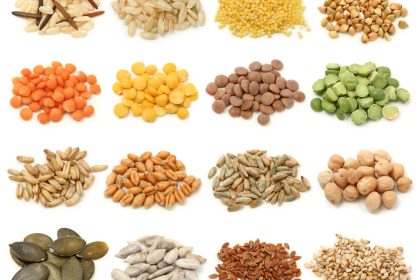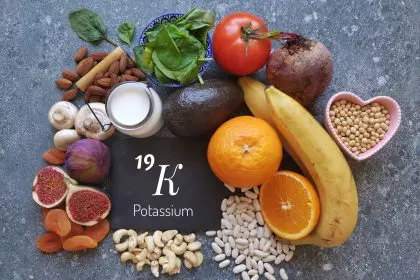Modern diets often lack sufficient magnesium, a mineral crucial for countless bodily functions. Research indicates nearly 60 percent of adults in the United States fail to meet their daily magnesium requirements, despite its vital role in muscle function, nerve signaling, blood sugar regulation, and bone health.
Understanding magnesium’s role
Our bodies store magnesium primarily in bones and soft tissue, with blood serum containing less than one percent. The kidneys carefully regulate these levels, maintaining the delicate balance necessary for optimal health. This mineral participates in hundreds of enzymatic reactions, making it indispensable for overall wellness.
Top magnesium sources
- Pumpkin seeds lead the pack with 156 milligrams per ounce, offering a convenient and tasty option for increasing magnesium intake. Their portable nature makes them perfect for on-the-go snacking.
- Spinach provides 157 milligrams per cup when boiled, making it an excellent addition to various dishes. This versatile green vegetable offers multiple preparation options while maintaining its nutritional value.
- Chia seeds contain 95 milligrams per ounce, easily incorporated into smoothies, yogurt, or breakfast bowls. These tiny seeds also provide beneficial omega-3 fatty acids and fiber.
- Almonds deliver 76.5 milligrams per ounce, offering a satisfying crunch along with healthy fats and protein. Their versatility makes them an excellent choice for snacks or meal additions.
- Dark chocolate containing 70-85 percent cacao provides 65 milligrams per ounce, making it a delicious way to boost magnesium intake while satisfying sweet cravings.
- Black beans offer 60 milligrams per half cup cooked, serving as an excellent plant-based protein source while contributing to magnesium needs.
- Avocados contain 39 milligrams each, providing healthy fats along with magnesium in a creamy, versatile package.
- Soy milk delivers 35 milligrams per cup, offering a dairy-free option for maintaining magnesium levels.
- Bananas provide 32 milligrams each, making them a convenient source of both magnesium and potassium.
- Yogurt contains 30 milligrams per cup, combining magnesium with beneficial probiotics and calcium.
- Brown rice offers 30 milligrams per half cup cooked, serving as a wholesome base for numerous meals.
- Salmon provides 25 milligrams per three ounces, along with essential omega-3 fatty acids and high-quality protein.
Daily requirements and absorption
The Recommended Dietary Allowance varies by age and gender, ranging from 310 to 420 milligrams daily. Women typically require 310-320 milligrams while men need 400-420 milligrams. Pregnancy can increase these requirements significantly.
Maximizing absorption
The body typically absorbs less than half of consumed magnesium, making efficient absorption crucial. Several factors influence this process:
Dietary fiber can decrease absorption when consumed in large amounts. However, moderate fiber intake remains important for overall health.
Certain medications may interfere with magnesium absorption. Consulting healthcare providers about potential interactions proves essential.
Cooking methods can affect magnesium content in foods. Steaming or quick-cooking vegetables helps retain more nutrients compared to prolonged boiling.
Meal planning strategies
Incorporating magnesium-rich foods throughout the day ensures steady intake. Consider these approaches:
Morning meals might include yogurt topped with pumpkin seeds and banana slices. This combination provides several magnesium sources while offering complete nutrition.
Lunch options could feature spinach salads with avocado and black beans, maximizing magnesium intake through complementary ingredients.
Dinner possibilities include salmon with brown rice and steamed vegetables, creating a magnesium-rich meal that satisfies various nutritional needs.
Supplement considerations
While whole foods should provide primary magnesium sources, some individuals might require supplementation. Various forms exist, each with different absorption rates and potential effects. Healthcare provider consultation remains crucial before starting any supplement regimen.
Long term benefits
Regular consumption of magnesium rich foods contributes to multiple health aspects:
Cardiovascular health improves through magnesium’s role in maintaining proper heart rhythm and blood pressure regulation. Bone density benefits from adequate magnesium intake, working alongside calcium and vitamin D for optimal bone health. Blood sugar control receives support through magnesium’s involvement in insulin sensitivity and glucose metabolism.
















